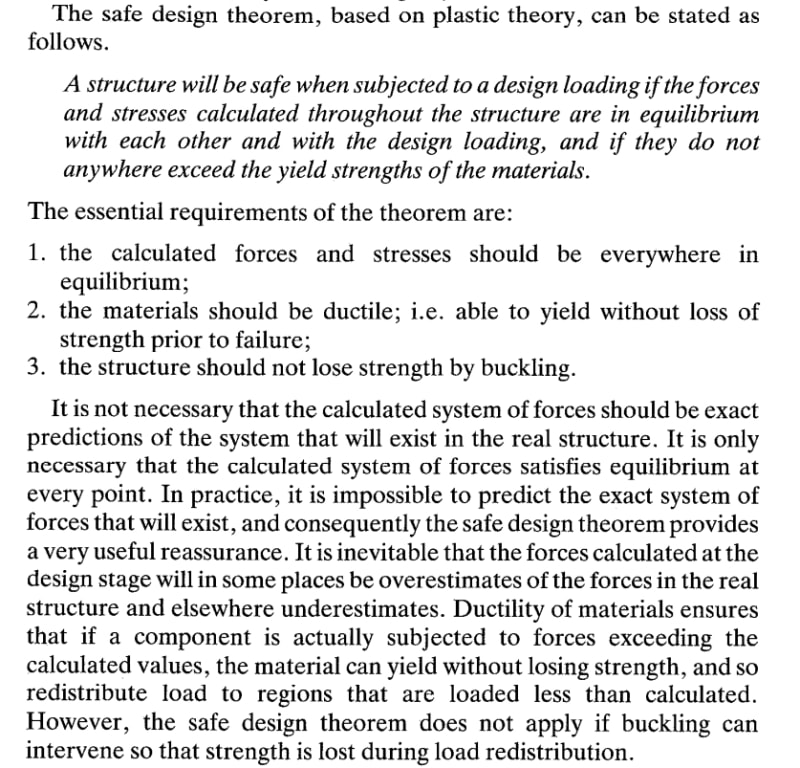milkshakelake
Structural
- Jul 15, 2013
- 1,178
Is it possible to design a building using the axial compression/tension limits of braces? Let's say a bracing can take 100 kips. So I would put a hard limit of 100 kips axial tension/compression in software (I use ETABS). This would use a nonlinear analysis. When this limit is reached, the load would distribute to other braces. My thinking is that when a brace is overloaded and starts to fail, the load would naturally go to the next stiffest member.
I wouldn't do this kind of analysis for beams or columns because of several reasons. I think the reason for a column is obvious, but for beams, a deck failure would instigate before loads can be redistributed. But diagonal braces are fundamentally different in this regard. I see two huge downsides to this method:
1. Nobody uses this method.
2. Hand calculations to check the analysis are basically impossible.
I wouldn't do this kind of analysis for beams or columns because of several reasons. I think the reason for a column is obvious, but for beams, a deck failure would instigate before loads can be redistributed. But diagonal braces are fundamentally different in this regard. I see two huge downsides to this method:
1. Nobody uses this method.
2. Hand calculations to check the analysis are basically impossible.

